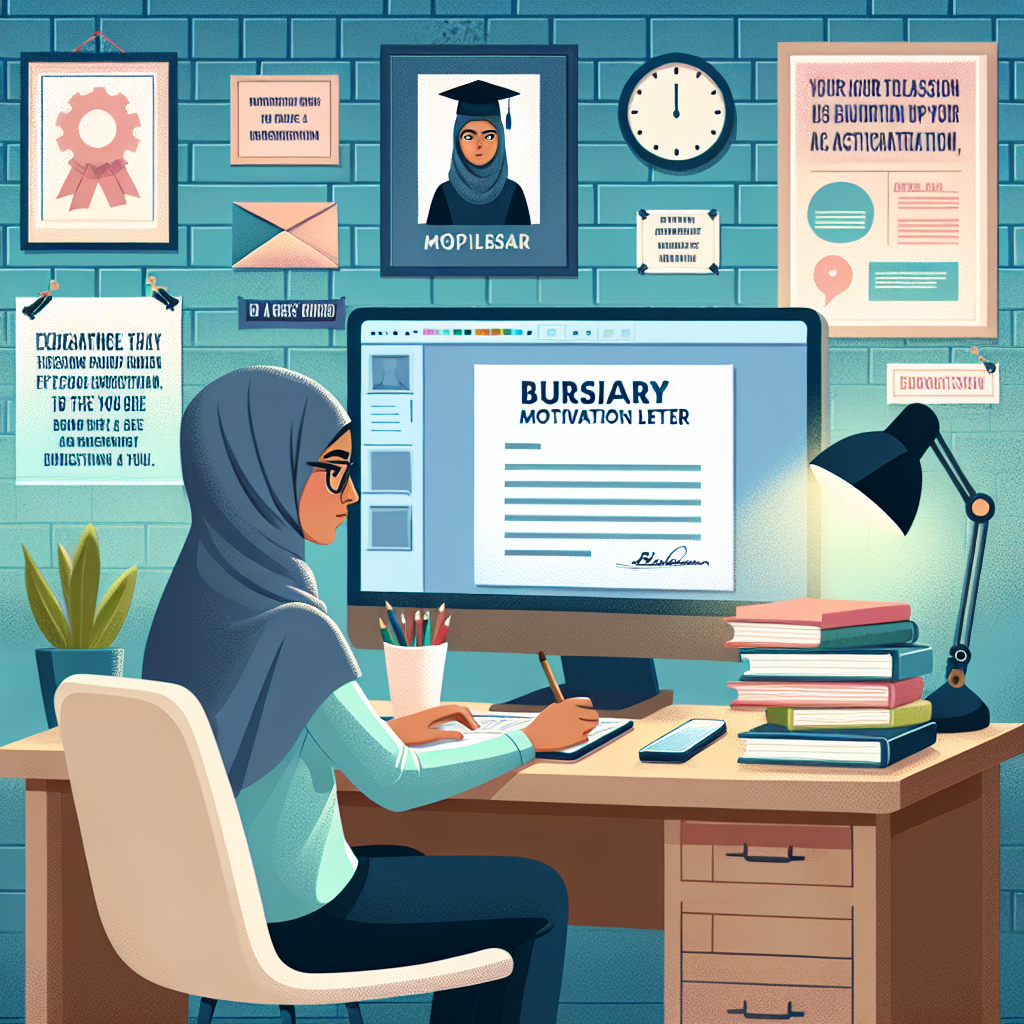Learn how to craft a compelling and personalized motivation letter for your bursary application to stand out from the competition.
Securing a bursary can be a crucial step towards achieving your educational goals. To set yourself apart from other candidates, it is essential to master the art of personalizing your bursary motivation letter.
This article provides detailed instructions on how to craft a compelling and personalized letter that reflects your unique qualifications and aspirations.
Understanding the Purpose of Your Motivation Letter
A motivation letter for a bursary application serves as a personal statement designed to convince the funding body that you are a worthy recipient of the bursary. It explains who you are, why you need the bursary, and how the financial support will benefit your future education and career goals.
Step 1: Research the Funding Organization
Each bursary provider has a different set of goals and preferences. Understanding these will help you tailor your motivation letter to meet their expectations and show that you are a perfect fit for their vision.
- Visit the organization’s website to learn about their mission and values.
- Take note of any specific requirements mentioned for bursary applicants.
- Look for any keywords or themes that you can reflect in your letter to make a stronger connection with the funder.
Step 2: Outline Your Letter
Create a simple outline to organize your thoughts and ensure that your letter has a clear structure. Typically, a motivation letter includes an introduction, several body paragraphs, and a conclusion.
- Introduction: Briefly introduce yourself and explain your reason for applying for the bursary.
- Body Paragraphs: Discuss your academic achievements, future goals, and financial need. More importantly, demonstrate how your values align with those of the funding organization.
- Conclusion: Recapitulate your need and desire for the bursary and express thanks for the consideration.
Step 3: Craft a Compelling Introduction
The introduction of your letter should grab the attention of the reviewers. Start with your personal story or a significant accomplishment that reflects your motivation and drives towards your education.
- Use a hook: Start with an interesting fact or brief story that piques interest.
- Clearly state your educational ambitions and how the burbury aligns with these goals.
Step 4: Detail Your Educational and Career Goals
- In the body of your motivation letter, be specific about your academic and professional aspirations. Explain how your career goals are aligned with the field of study you wish to pursue with the help of the bursary.
- Talk about your current academic status and any relevant coursework or projects.
- Describe the career path you plan to pursue after completing your studies and how the bursary will help you achieve these goals.
Step 5: Discuss Your Financial Need
Clarify your financial situation in a manner that underscores the necessity of the bursary for your continued education. Be honest and direct, but avoid overly emotional pleas. Focus on how the financial aid will help you overcome your current barriers to achieving your educational goals.
- Detail the financial challenges you face that might impede your education.
- Explain how the bursary will be used to cover important costs like tuition, books, and living expenses.
Step 6: Align with the Organization’s Mission
In another paragraph, tie your personal goals to the goals of the organization. Show that you have done your research and that your interests extend beyond mere financial gain.
- Draw connections between your future aspirations and the objectives of the bursary provider.
- Highlight any past experiences or activities that demonstrate your commitment to their values, such as volunteer work or participation in community projects.
Step 7: Conclude Effectively
Your conclusion should reinforce your interest and need for the bursary. Finish on a positive note, expressing gratitude for the consideration of your application and emphasizing your anticipation of contributing positively to the community with the aid of the bursary.
- Summarize your main points succinctly.
- Thank the reader for their time and consideration.
- Express a hopeful tone about future engagements with the organization.
Step 8: Edit and Proofread
Before submitting your motivation letter, ensure that it is free from spelling and grammatical errors. Proofreading not only helps refine your message but also shows your professionalism and attention to detail.
- Review the letter multiple times and consider having a friend or mentor provide feedback.
- Check for any typos, grammatical mistakes, or awkward phrasing.
- Ensure that the tone remains professional and courteous throughout.
Closing Thoughts
Mastering the art of personalizing your bursary motivation letter is essential for standing out in a pool of candidates. By researching the funding organization, crafting a structured and poignant narrative, and aligning your personal ambitions with the goals of the bursary, you can construct a powerful letter that showcases your qualifications and passion.
Remember, a personalized, well-written motivation letter is your ticket to proving your worth and securing financial support for your education.
